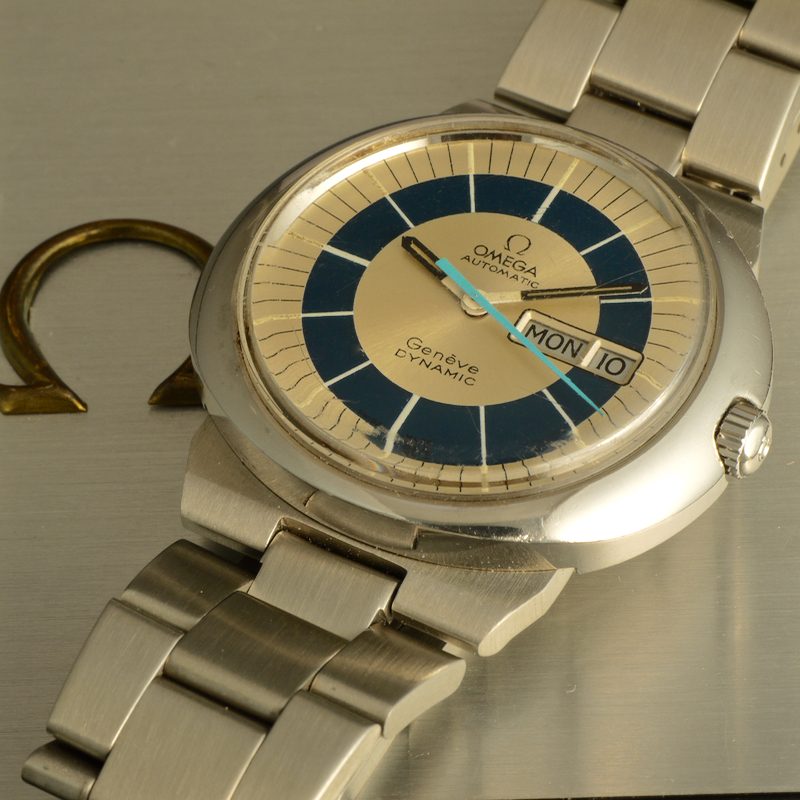
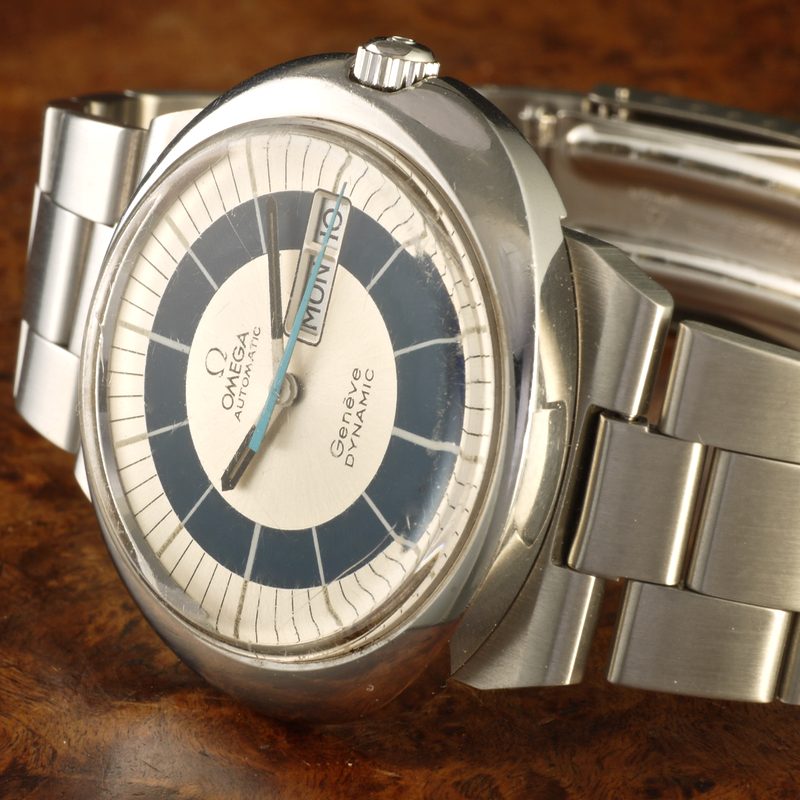

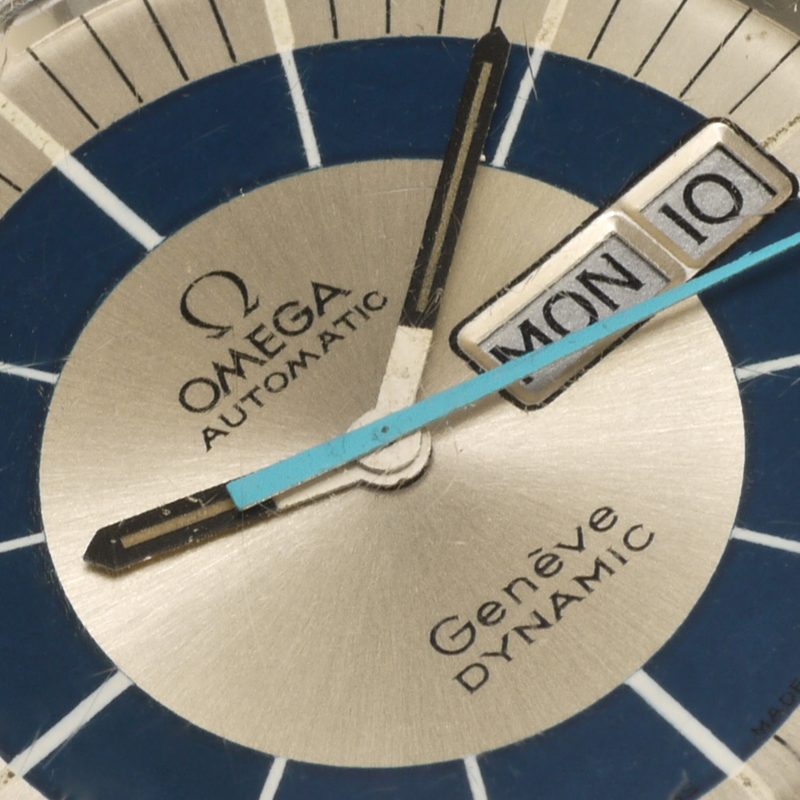
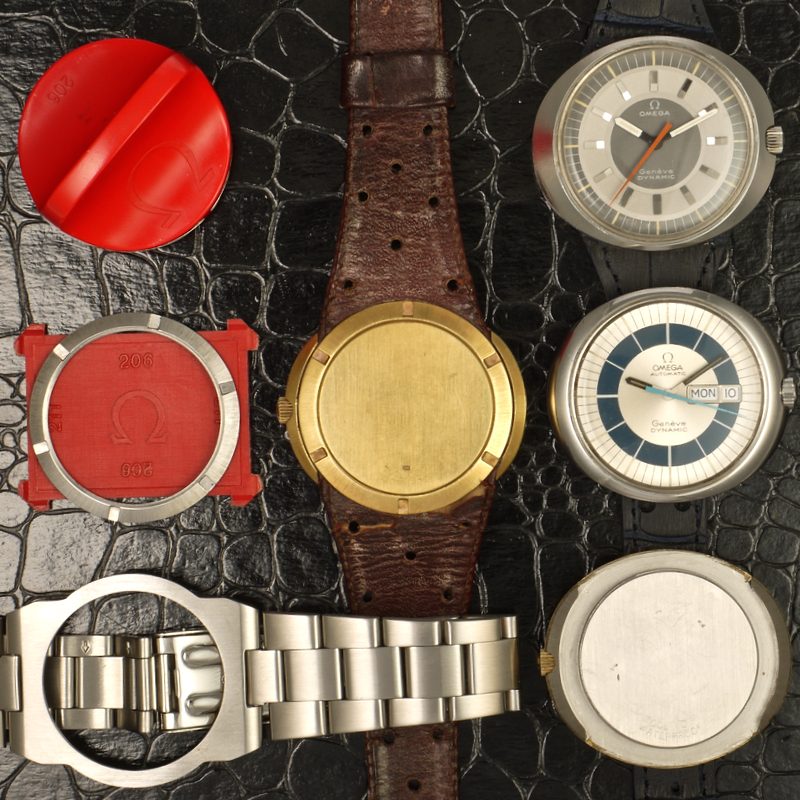
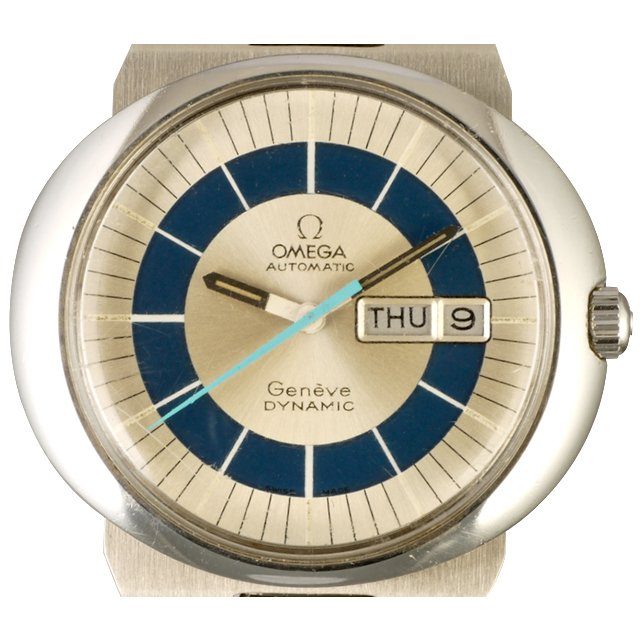
Omega Geneve Dynamic
Hamilton Watch Company introduces the world's first solid-state digital quartz-crystal wristwatch prototype. Named Pulsar, it uses LED technology and has a bright red digital readout1970 Omega Geneve Dynamic ref. 166.0079, automatic movement cal. 1022.
Created for the Prix de Ville de Geneve in 1965, the Omega Dynamic was first released to the public in 1967.
It was conceived by Robert Foster and designed by Raymond Thevanaz. They visualized a watch which could give the idea of modernity and personality to the wearer. This idea was later used by Nicolas Hayek when conceiving the Swatch.
The Dynamic is a cool watch, its distinctive design born of the free-living spirit of the late 60s and early 70s and was all computer designed, super modern for its time.
The case had an elliptical shape which matched perfectly with the anatomy of the wrist, it had an ergonomic dial with concentric time zones, this detail made it easier to read the hours even with hands with contrasting colors.
To avoid breaking the aerodynamics lines, the crown was chased into the body. In addition, the crown and the crystal were hermetically sealed so the watch could be water-resistant.
The watch was available in 24 color combinations on the dial when first released. The hour and minute hands are usually white.
At the beginning of the 70s, the latter gentleman’s model was offered to all male employees having worked at Omega for at least one year. Female employees had a funding supplement, which they could use toward any model of their choice, the majority chose the Dynamic.
Omega was founded in 1848 by Louis Brandt at the age of 23. The brand’s reputation grew fast and in 1895 the watches achieved a precision of 30 seconds a day.
By the turn of the 19th century Omega was one of Switzerland’s largest watch companies with 240,000 watches produced annually and employing 800 people.
Omega made its debut in sports during the Gordon Bennett international ballooning Cup in 1917; since then Omega has gone on to be the official timekeeper at 21 Olympic Games.
In 1936 Omega set the remarkable World precision record of 97.8 points at the Kew-Teddington observatory in England.
In 1957, with motorsport in mind, Omega launched the Speedmaster, which in 1965 was chosen by NASA as its official chronometer in Space. Four years later the Moonwatch was the first watch to be worn on the Moon, when on 21st July 1969 Neil Armstrong made his giant leap for mankind. Currently Omega belongs to the Swatch Group.
